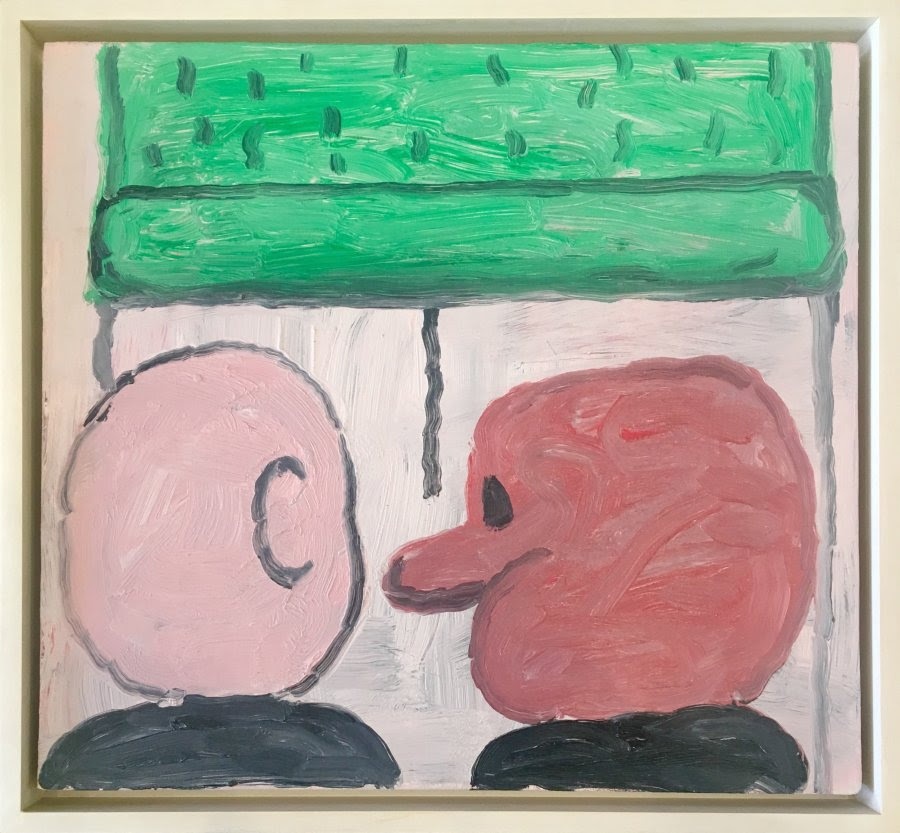Philip Guston
The painting is Untitled; the time it took to paint, uncertain; an exact year, undefined. Only, that this period signifies one of the bleakest in US policy, both at home and abroad. Martin Luther King is assassinated in 1968. Destruction is unleashed in Vietnam. In the painting, an anonymous pink figure looks out of the window. We’re prevented (a swathe of grey paint; obstructive) from seeing what he sees. A pinker figure looks at the first. We’re prevented (the back of a head, no definable features – no face – ) from seeing who he sees. Only the green blind is a distinctive feature, oddly neon in this monochrome land of spooks, spies; bureaucrats in suits. Frustrated from getting an accurate ‘read’, one can only arrange a pictorial alphabet of forms set against flat planes of colour. As Guston wrote in a studio note: “Advice to myself: leave it alone. It should be able to live by itself.”
b.1913, Montreal; d.1980, Woodstock
“What kind of man am I, sitting at home, reading magazines, going into a frustrated fury about everything – and then going into my studio to adjust a red to a blue?” Prodigiously able to paint in any style, Philip Guston was an autodidact in the art histories of Europe and the Americas, influenced by surrealism as much as social realism, painting in the political manner of the Mexican muralists before finding some success as an Abstract Expressionist. Between ever more violent expressions of white supremacy in the US and war in Vietnam, Guston found the manner in which he would continue to work – called flat, cartoonish, novel, figurative, metaphorical, unsettling, haunting, dream-like, and autobiographical. “What would it be like to be evil?” he wondered while recurring hooded figures of Klansmen and pink-fleshed ‘suits’ crowded his artworks.
Forty years after the artist’s death, in 2020, a travelling retrospective of his work organised by four public museums located between the US and London was postponed, “until a time at which we think that the powerful message of social and racial injustice that is at the heart of Philip Guston’s work can be more clearly interpreted,” according to the organisers. It was read as a response to the murder of George Floyd by a white police officer. The decision to postpone, hotly contested, would ignite one of the most divisive debates in recent memory regarding the role of public institutions in public life. Is their mandate to share artworks with the public, or to shield the public from artworks? Some argued that this decision, rather than an expression of solidarity with Black Lives Matter, only served to shield white audiences from facing the banality of their own evil by raising the spectre of buried racism in each. For in the ominous figures, the hooded Klansmen, Guston recognised himself – an exorcism in biting satire as self-portrait. Mark Godfrey presented this postponement as a case study while speaking on censorship and self-censorship to a group of aspiring curators at A4 Arts Foundation in 2023. “What does it mean to ask if there is racism inside of you or evil inside all of us?” Godfrey asked, prompting the group to self-reflection.
